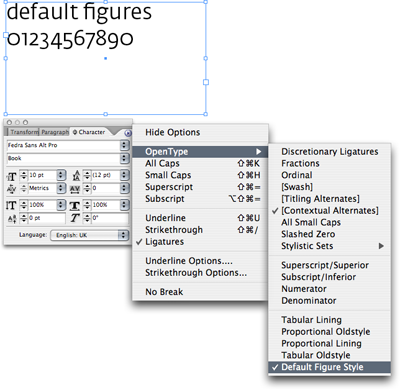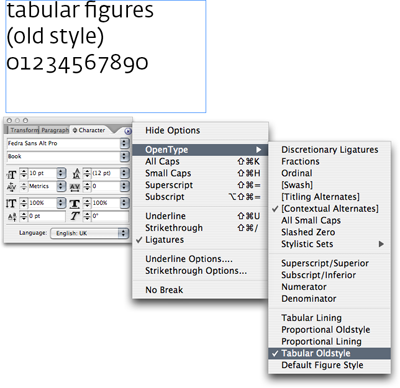Choosing numerals
OpenType fonts generally contain different numeral styles within one font. These different types of figures are controlled by your typesetting application (such as Adobe InDesign, Illustrator, or Quark Xpress 7 – all 'OpenType-Savvy'). Please note that not all applications support OpenType features. Software which cannot access these advanced options, (such as Microsoft Word 2008 and earlier), will only display the default figures. See the list of applications which support OpenType layout features.
If you do not specify which style of numerals you would like to use, the application will use the font’s default figures. Fedra Sans, for example, displays Proportional Oldstyle figures by default.

In Adobe applications, if you go to the Character palette and then select the OpenType menu you can change the numeral style to any of the OpenType-supported options. For setting numbers in text in capital letters (in a headline, for example), Proportional Lining figures are recommended.

For typesetting tables, it is good practice to use Tabular Lining figures.

In addition to Tabular Lining figures, most Typotheque fonts also contain Tabular Oldstyle figures.

Typotheque OpenType fonts also contain Superior and Inferior figures, which can be selected in a separate part of the OpenType feature menu.


Finally, to avoid confusion between a zero and a capital O, most Typotheque fonts offer a slashed zero glyph.